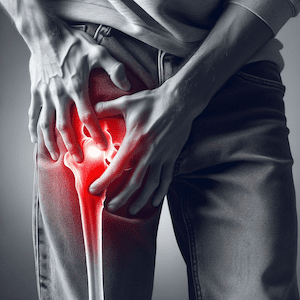What is Hip Impingement?
Hip impingement, or Femoroacetabular Impingement Syndrome (FAIS), is a condition where there is abnormal contact between the hip joint’s ball and socket. Typically, hip or groin pain associated with movement indicates this condition. Specifically, the pain often manifests deep within the groin or, less frequently, at the hip’s side or in the buttock.
Diagnosing FAIS
For a conclusive FAIS diagnosis, three criteria must be satisfied: symptoms, clinical signs, and imaging findings. Symptoms include pain related to movement, usually felt in the groin. Clinical signs involve specific tests that reproduce these symptoms and may reveal restricted hip motion or muscle weakness. Imaging, through X-rays and possibly CT or MRI scans, helps to evaluate the hip’s structure and rule out other conditions.

What Causes Hip Impingement?
FAIS may arise from primary causes, which relate to lifelong activities and development, explaining why active individuals and athletes are more prone to the condition. Secondary causes typically stem from previous hip problems or injuries such as Perthes disease, Slipped Capital Femoral Epiphysis (SCFE), or femur fractures.
Hip Impingement Treatment
Treatment primarily involves physiotherapy, aiming to mobilise the hip joint, increase tissue flexibility, and strengthen the hip muscles for better joint control. In some cases, after a recommended period of at least three months of non-surgical treatment., Medication might be used to alleviate pain and inflammation.
When is Surgery Considered?
Persistent symptoms, despite non-surgical management, may lead to a referral for surgical consultation. For professional diagnosis and a tailored rehabilitation plan, individuals with hip impingement symptoms are advised to consult with their physiotherapist or a hip orthopaedic specialist promptly.



